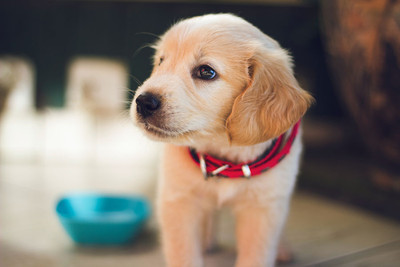Posted by Zena Conkey on Jul 20, 2021
Getting a new puppy is a very exciting time for a household but if you already have a dog in your family it can also be an anxious time as you want introductions to go as well as possible. Over the years I have been lucky enough to welcome several dogs into our home and I have found that by putting a few simple steps in place you can help things to go as smoothly as possible.

Preparation
You can start to prepare your dog for your new puppy arriving in the weeks leading up to the day they come home by bringing some of the pups bedding home. Scent is very important to dogs and doing this it will allow your dog to become familiar with the smell of the puppy before they arrive which some dogs can find helpful. You can also give the puppy something that smells of your dog if allowed for the same reasons.
Decide where your puppy is going to sleep, then set up their bed a few weeks before they arrive and allow your dog to explore it if they want. Crates or puppy pens are ideal as beds they provide a safe space for the puppy to rest in and allow your dog some respite should they need it.
The big day
After all the planning and anticipation the day will come to bring your new arrival home and it will no doubt be a very exciting time with everyone wanting to meet and fuss over the new puppy. However to make for a successful introduction you should give the majority of your attention to your existing dog so they don’t feel pushed out by the youngster and restrict the number of visitors until both dogs are comfortable around each other. I know this can be much easier said than done!
The Introductions
The key to making a successful introduction between a puppy and an existing dog is to ensure that both dogs have opportunity and space to walk away if they choose to do so, that there are no toys, food or other items lying around that may be seen as high value to one dog resulting in conflict and that everyone is as calm as possible, yourself included. Ideally when introducing your new puppy and older dog you should meet outdoors on neutral ground but with a young, unvaccinated puppy this might not be possible so choose your space carefully. For example avoid your dog greeting you at the front door when you are carrying the new puppy in. You will know how your dog is with other dogs and so have some idea how they will take to meeting a young puppy but even with the best natured dog care needs to be taken.
Some useful tips are:
- If the existing dog has someone in the family they are particularly bonded with then this should be the person handling them while some else has the puppy.
- Do not allow either dog to stare or make strong eye contact as this can make dogs feel very uncomfortable.
- Do not allow either the puppy, or older dog for that matter, to jump on or harass the other.
- Ensure both the puppy and older dog are under control to avoid any unexpected conflict escalating. While introducing dogs on lead can at times be less than ideal it does provide you a safety net but you should aim for the leads to be as loose as possible.
- Avoid meeting head on. Dogs will naturally greet each other in an arcing movement so allow the dogs to approach each other in this manner and to sniff at each other especially if on lead.
- Watch the body language of both older dog and puppy. If you see signs that either is finding the meeting uncomfortable or stressful then take some time out by either walking the dogs away or encouraging them to sniff at the ground. Puppies can be very excitable and your older dog may not appreciate the hustle and bustle of the new arrival, take it slow allowing the puppy to calm down throughout the day.
- If your dog growls or snaps at the puppy do not tell your dog off as this is important communication from your dog to the puppy. If necessary simply remove the puppy for a few moments to allow your dog to recover.
- Finally remember to breathe and stay calm. Speaking from personal experience it is very easy to find yourself holding your breath when introducing new dogs but this will cause you to tense which can pass down the lead to the dogs so be aware of your own body language.
- Food is high value, feeding both dogs in different areas or different sides of the house may be a good idea to keep them separated causing less distractions and so they know their food is still their own food
It can take a few weeks or even months for an existing dog to feel comfortable around a new puppy and you should always be around to supervise any interactions, being ready to step in should you be needed especially in the early days. If you are unable to do so then the puppy should be separated from your dog so they don’t unwittingly get themselves into trouble.
By taking the time to make sure early introductions and interactions go well you can help make a harmonious multi-dog household where everyone can enjoy life together.
Check out our other puppy blog posts for more tips and tricks.
